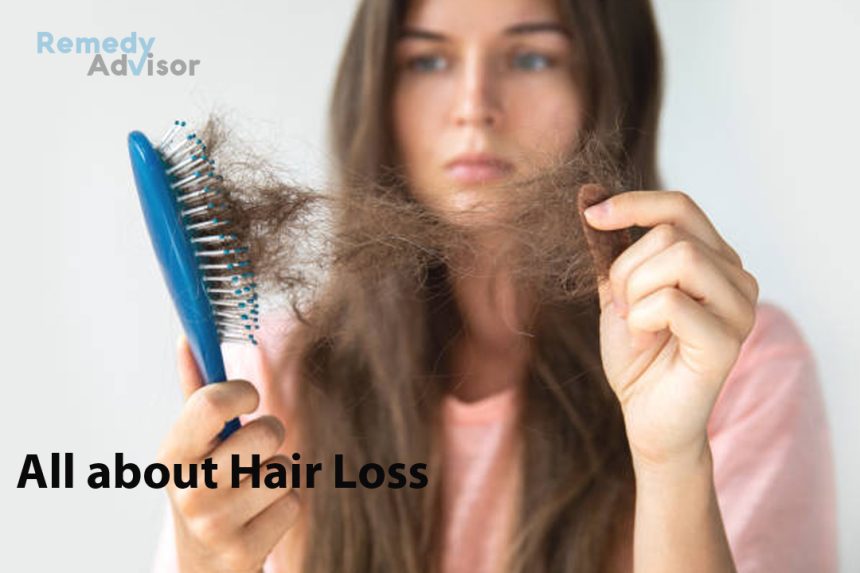Men and women have battled hair loss for millennia. Ancient Egyptians tried slathering their bald spots with animal fat while Julius Caesar wore his famous laurel wreath low to hide a receding hairline.
These measures may sound silly to us now. But the methods tried since then from prescription lotions to spray-on fake hair aren’t much better at growing hair.
Is there any truly effective way to stop hair loss? To find out, we spoke with hair specialist David Orentreich, MD
• What causes hair loss?
By age 50, hair loss affects more than 50% of men and 25% of women. Most of them have what’s known as androgenic alopecia.
In men, this hereditary condition (also known as male pattern baldness) causes hair to recede from the forehead back to the crown. In women, it causes the hair to thin all over the head.
At the root of the problem literally are the male hormones testosterone and di-hydro testosterone. Present in both men and women, these androgens cause hair growth to “switch off.”
• What about other causes?
The second leading cause of hair loss is alopecia areata. This poorly understood autoimmune disorder inflames hair follicles and causes bald patches on the scalp and sometimes on other parts of the body as well.
Hair loss can also be caused by thyroid trouble, pregnancy and other medical conditions that upset the balance of hormones in the body.
Some cases of hair loss are caused by “cornrows” and other hairstyles that pull the hair too tight. Such hairstyles cut off blood flow to the follicles, causing the hairline to recede.
• Don’t certain medications cause hair loss?
Yes. Some diuretics, antidepressants and cancer chemotherapy agents can cause temporary hair loss.
Sometimes even discontinuing birth-control pills causes sudden shedding of hair.
• What’s the best way to treat hair loss?
That depends on what’s causing your hair loss. Sometimes all it takes is changing a prescription or hairstyle or getting treatment for an underlying medical condition.
If the culprit is alopecia areata, injections of the anti-inflammatory drug cortisone often help.
A dermatologist simply injects tiny amounts of cortisone in a grid pattern on the scalp. This blocks the immune reaction underlying the hair loss, allowing hair to regrow.
If you’re afraid of shots, cortisone lotion 100 to 1,000 times more concentrated than what’s sold over the counter may work.
• What about androgenic alopecia?

There is no cure for this form of baldness. Most of the time, however, aggressive treatment can keep the problem from getting worse.
I’ve learned that the hair loss drug minoxidil (Rogaine) which boosts blood flow to the follicles is not the miracle cure we had been hoping for.
Minoxidil lotion often works at first, but it soon loses its effectiveness. That’s because poor blood flow to the follicles is only one piece of the puzzle.
The real problem is the presence of androgens. For that, you need an androgen-blocking drug. One such drug is finasteride (Propecia), a medication originally developed to treat prostate enlargement.
I’ve found that hair loss can often be stopped on a long-term basis by mixing minoxidil with finasteride and thyroid hormone or another drug that stimulates hair metabolism.
All the patient has to do is rub this three drug “cocktail” into his/her scalp every day.
If a dermatologist has advised you to use minoxidil alone, ask about using it with these other drugs. Finasteride should not be used by men who are trying to father a child or by women who are pregnant or trying to conceive.
• What about growing new hair?
If hair loss is caught early enough, the three-drug cocktail may regrow enough hair that the problem is less noticeable.
This is especially true for women. Since their androgen levels are just 10% those of men, it’s easier for finasteride to do its job.
When it comes to men who have been balding for more than 10 years or so, topical therapy is rarely enough. When my male patients tell me they want to regrow hair, I tell them that oral finasteride is their best bet.
Finasteride doesn’t work in all cases, of course. When it does work, we still can’t promise 100% regrowth. But since finasteride came on the market, I can do more for my patients now than ever before.
• Are there any other options for regrowing hair?
You can always try hair transplants.
The basic hair-transplantation procedure was developed by my father, Norman Orentreich, MD, back in 1953. Although the surgery has been refined many times since then, the basic concept remains unchanged. We “harvest” healthy hairs from the back of the patient’s head and transplant them to the bare areas up top or in front.
In the old days, the grafts were so large that they often left a sort of “clumpy” look. Now I use micro-grafts, which contain no more than two hairs each.
With micro-grafts, the appearance is so natural that after the transplant has grown in, the patient often can’t tell exactly where it was. Several two- to four-hour procedures are required. Cost: $1,000 to $6,000 per procedure.
• What about hair weaves?
A hair weave is really just a wig that’s been sewn into your hair. Weaves often look good initially, but they are hard to maintain.
A transplant needs no special care. But a weave requires regular cleaning and tightening. That means frequent visits to the salon that installed the weave.







